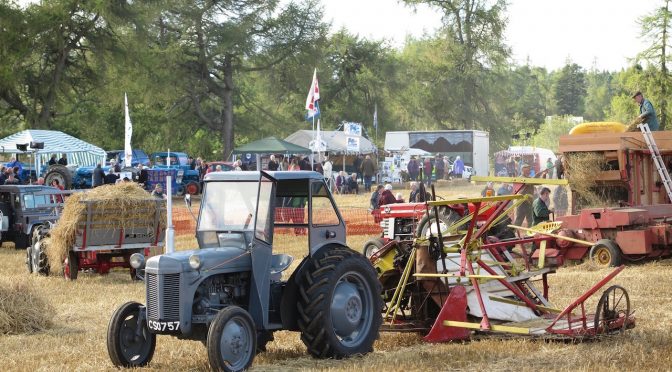Who were the English companies that exhibited reapers at the Highland Show in the late 1850s until 1910?
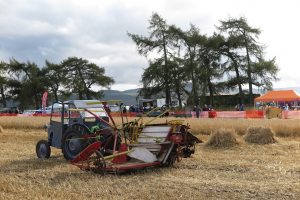
There were 58 English exhibitors that displayed reapers at the Royal Highland Show from 1858 to 1910. A significant number of them exhibited at only one or two Shows and show districts. This gave them a local to a regional presence in Scotland. Some also attended the Show over a longer period, also visiting a number of show districts. Some 16 exhibitors attended more than 6 shows. One of them, R. Hornsby & Sons, Grantham, did so for 39 shows. Those exhibitors that exhibited in all 8 districts sought out and established a national presence in Scotland: they were manufacturers that had a national and international reputation for their reapers including H. Bamford & Sons, Uttoxeter, Brigham & Bickerton, Berwick on Tweed, Harrison, McGregor & Co., Leigh, Manchester, R. Hornsby & Sons, Grantham, and Picksley, Sims & Co., Leigh, Manchester and Samuelson & Co., Banbury.
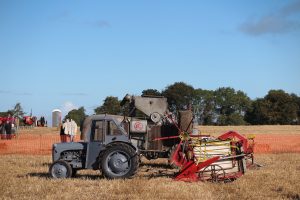
The English exhibitors’ use of the show districts provides an insight into how they made their machines available in Scotland. While they had a distinct pattern of exhibition throughout them, it differs in many respects from the pattern used by the Scottish exhibitors and the ranking of the show districts set out by the Royal Highland and Agricultural Society of Scotland. These differences can be attributed to a number of factors. The most important was the geography of the country and the distance of the show districts from the Scottish-English border. The Inverness Show District was the least frequently visited show district by the English exhibitors: it was located furthest from the Scottish-English border; it was also principally a stock rearing county and had the smallest implement department of all the Show Districts. The Stirling and Perth shows, located centrally in central Scotland, attracted an average number of English exhibitors. Even more accessible were the Edinburgh and Glasgow Show Districts, also the most successful ones, which also attracted the highest number of exhibits in the implement department, as also throughout the Show as a whole. The Edinburgh Show District had the largest number of English exhibitors of reapers, though the Glasgow Show District had the third highest.
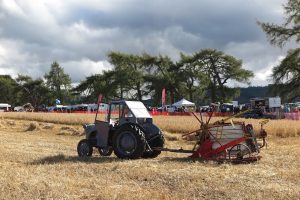
The show districts adjoining the Scottish-English border – Kelso and Dumfries – each had large numbers of English exhibitors and were ranked second and fourth for the exhibition of reapers by English exhibitors, higher than those for the Scottish exhibitors of reapers, and those assigned by the Royal Highland and Agricultural Society of Scotland. They were the most easily and readily accessible districts, as exhibitors located in the north of England had only a short distance to travel to exhibit their machines. Some of them also used the Show as part of their circuit of agricultural shows during the summer months, and did not make recourse to it in any other year: Andrew Thompson, Berwick on Tweed (1863), and Moffat & Robertson, Cornhill on Tweed (1880), only exhibited at the Kelso Show while William Trotter, Newcastle (1860), and Thomas Reay, Carlisle (1903), only exhibited at the Dumfries Show.
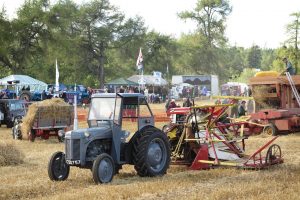
The English exhibitors obtained their reapers from a number of sources. More than half of them, including the largest and leading manufacturers, manufactured their own machines, while a further 4 also manufactured machines from a patent or another design. They also displayed machines from other English manufacturers, and as with the Scottish exhibitors that displayed machines from other Scottish manufacturers, their numbers were also small. That practice was also limited to the 1860s and 1870s, and by exhibitors in the north of England, of which five of them were from Berwick on Tweed, Carlisle and Liverpool, and for machines procured from a limited number of manufacturers. Only one exhibitor had a machine from a Scottish exhibitor: Brigham & Bickerton, Berwick on Tweed, displayed one from John Watson, Ayr, at the Kelso Show in 1872.
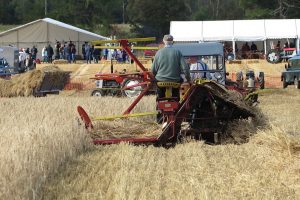
Despite the growing importance of American and Canadian machines, especially from the 1890s, only 16 English exhibitors displayed their machines. They did so for a small number of manufacturers, exhibiting their machines at a few shows exhibited American machines at only one show). The Canadian and American manufacturers were to pose a significant challenge to the English manufacturers. Only the English companies could compete with the American makers up to the 1880s, when they too were driven out of the market’. Their pattern of exhibition contrasts with the 76 Scottish exhibitors of these machines.
The photographs were taken at the Strathnairn Rally, September 2016.
